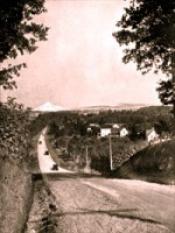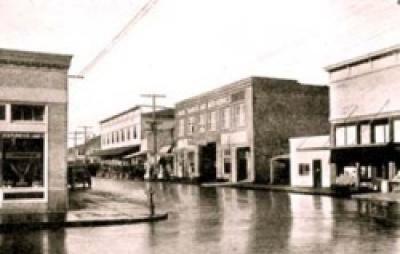History of Silverton
Silverton Origins
Over three hundred years ago the City of Silverton was occupied by two contiguous Native American language tribes; the Kalapuya and the Molala. The Kalapuya primarily resided in present day Silverton, however, they were a semi-nomadic tribe following the seasons for hunting and harvesting. They thrived from the robust vegetation produced by Silverton’s rich soil and harvested over 50 varied foliage’s for food and medicine. During the late 1700’s to 1830’s, European explorers began to venture to the Pacific Northwest with the rise in fur trading. The Europeans added to the population creating an economic differential for the land. This resulted in the depletion of the Kalapuya tribe due to decrease in fundamental resources and exposure to communicable disease. The majority of the Kalapuya over time integrated into the Confederated Tribes of Grande Rhonde.
Settlers came to the banks of the Silver Creek following timber and hydropower. In 1846, James Smith and John Barger established a sawmill on the creek with a small settlement, and thus, Milford began to grow. In 1854, Milford was abandoned and the businesses within the area were relocated downstream to the current site of the City of Silverton. Silverton was officially incorporated in 1885, and by 1894, the population of Silverton reached nearly 900. The blossoming town became a trading and banking center of prominence and was ranked as one of the more progressive towns of Western Oregon.
Additional information on the Kalapuya and the history of the City of Silverton can be found here.

Growth
By 1921, Silverton industries were producing exports for other areas and even some foreign countries. The Fischer Flour Mills on South Water Street was among the exporters. Power for the mill was obtained by damming Silver Creek at a point near the present pool, diverting water into a millrace that ran along the creek to the mill and then dumped back into the creek.
A short way downstream from the Fischer mill, the creek was dammed again to furnish power for a sash and door plant. Timber drove local industry, and the Silver Falls Timber Company was once the largest sawmill of its kind in the world. Metal piping was also part of the economy. To this day, metal covers on Silverton streets and sidewalks bear the legend "Eastman Brothers Metal Works." One of the Eastman brothers, L.C., was mayor in the 1920s.

Oregon Garden
The opening of the Oregon Garden signifies the success of a partnership between the Garden, a private enterprise attracting tourists to botanical displays, and the City of Silverton. The Oregon Garden's expansive wetlands area benefits from the city's excess reclaimed water, while the community benefits from trade the Garden draws to the area.
Photos
To see the views in modern-day Silverton, check out the city photo gallery. Photos from 1924 are found in "Silverton, Oregon in Pictures," published by Drake and Hoblitt. The 2007 photo is by Mike Birch.

